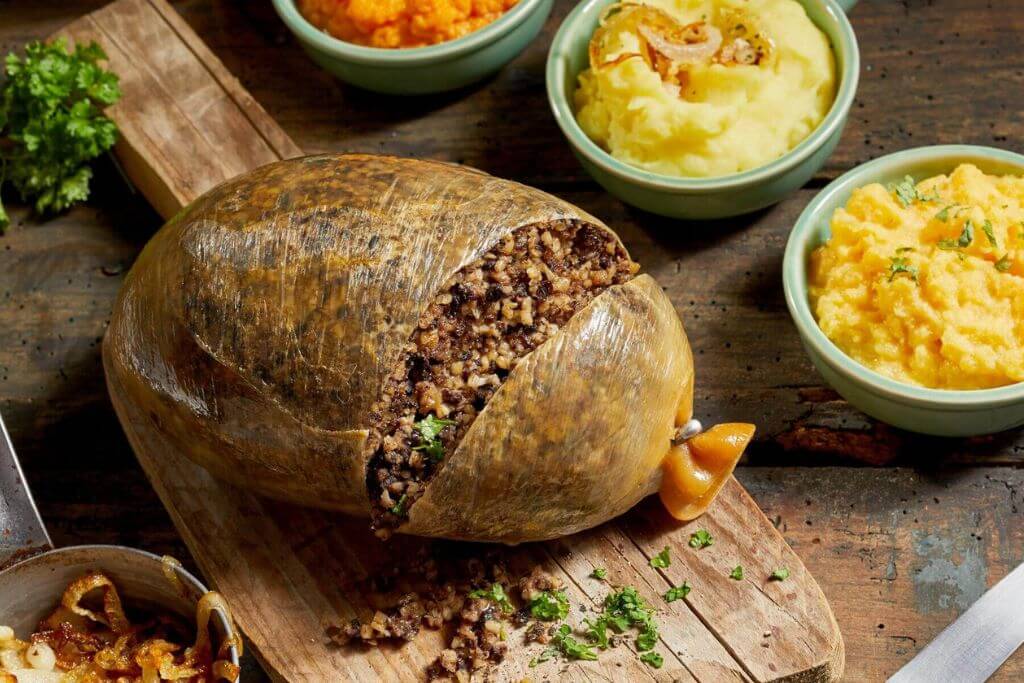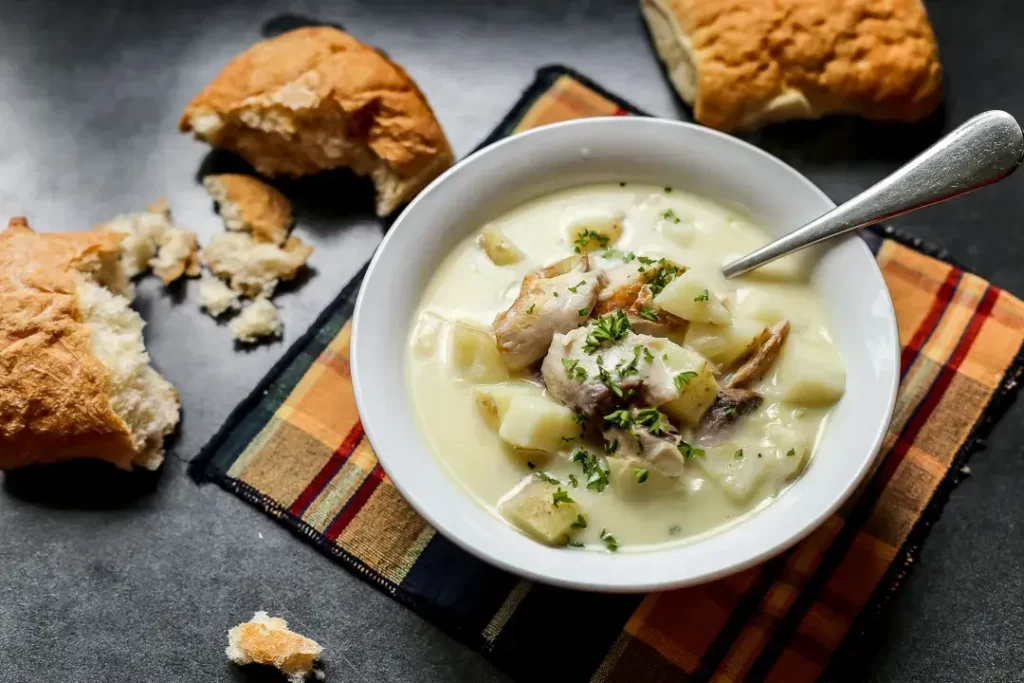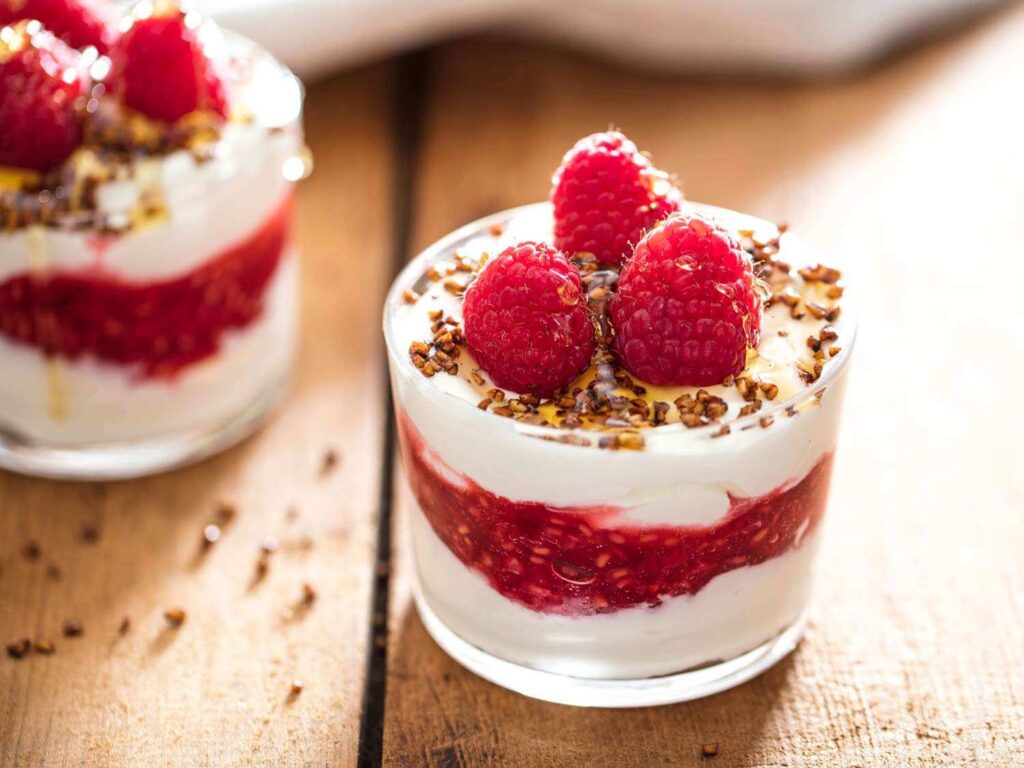You can’t say you’ve truly visited a place unless you’ve eaten with the people, and you can’t claim to know Scotland until you’ve had traditional Scottish cuisine. Some meals have decades of tradition and a stormy history; others have deep-fried batter. Scottish cuisine draws on the natural abundance of its coastal seas, moors, and craggy peaks to create dishes that are as memorable as they are flavorful, with whiskey, the national firewater, serving as a strong companion to hearty classics.
Neeps and Tatties, Haggis

Haggis is Scotland’s national meal, immortalized in Sir Robert Burns’ poem ‘Address to a Haggis’ – a superb ambassador for traditional Scottish food and a stellar example of nose-to-tail dining and the waste not, want not mindset. Traditionally cooked from boiled sheep’s ‘pluck’ (finely chopped liver, heart, and lungs), oatmeal, suet, herbs, spices, and seasoning, haggis is usually served with two side dishes: creamy mashed turnips (neeps) and mashed potatoes (tatties), as well as a nice swig of whisky to ease it all down.
Cock-a-leekie
This isn’t an allusion to male incontinence, as some may assume, but rather the Scottish version of French chicken soup. The culinary culmination of Scotland’s ‘Auld Alliance’ with France dates back centuries – many of Scotland’s landed gentry have French roots – and is a hearty, peppery chicken broth, thick with rice or barley, redolent with the crunch of leeks and the kick of onions, and occasionally (and perplexingly) garnished with prunes.
Cullen Skink is a surname.

Cullen skink may sound like a swamp creature with few friends, but it’s Scotland’s equivalent to American chowder and French bisque, though it’s smokier than the former and more satisfying than the latter. This creamy winter warmer originated in the northeast town of Cullen and is traditionally made with Aberdeenshire ‘finnan haddie’ smoked haddock cured using specific regional greenwood, onions (or leeks), and potatoes, with cream added to the broth for extra calories.
Porridge with Oats
It’s good enough for Highlander, therefore it should be good enough for you. Though oat porridge is not unique to Scotland, it has been linked with the country for centuries. It is a basic breakfast dish of overnight-soaked oats heated with milk or water and customarily served with salt. According to archaeological evidence on the Outer Hebrides, oat cultivation in Scotland dates back at least 2,500 years.
Cranachan

Oats emerge once more in one of Scotland’s favorite desserts, which makes the most of ingredients sturdy enough to thrive in rough Scottish terrain. Cranachan is a layered dish composed with toasted oats, fresh raspberries, double cream (or crowdie cheese), honey, and a large splash of whisky. It’s as soothing as a hug from your grandmother.
Clootie Dumpling is a type of dumpling.
It’s round, consisting of flour, suet, dried fruit, sugar, spices, and milk, boiled in a ‘clootie’ (a piece of fabric), and it settles in your stomach in a really delicious, stodgy way after you’ve eaten it. So, if you like fruitcakes and cannonballs, don’t pass up this brave, hardworking person’s treat.
Rumbledethumps

Yes, that is a genuine term, and no, it is not the name of the imp in the Brothers Grimm fairy tale who spins straw into gold and trades it for the miller’s daughter’s baby. Rumbledethumps, a Scottish dish from the Scottish Borders that blends butter-sauteed cabbage and onion with mashed potato, is a fantastic illustration of the magic that can be worked with leftovers if you’re dedicated enough. As a finishing touch, sprinkle the mixture with grated cheddar and bake until bubbling and golden brown.
The Arbroath Smokies
Smoked fish, which is suited for lengthy sea voyages, has long been a staple of Scottish fishermen. Arbroath smokies are the most famous fish-related Scottish dish: haddock taken off the coast of Arbroath, salted and dried overnight in barrels, then smoked in a barrel over a hardwood fire. According to urban mythology, this northeast coast staple was created when barrels of salted fish caught fire one night, resulting in… most appetizing.
Shortbread
Scotland’s favorite biscuit is created with only three ingredients: sugar, butter, and flour. Not only is it delicious for dipping in tea, but it’s also part of a venerable Scottish ceremony in which a newlywed woman has a shortbread cake smashed over her head upon entering her new home. Hmmm. We hear you wondering, “Why not a man?”
Scottish Pie

If you happen to be in Scotland for a rugby or football match, join the locals in the halftime queue for scotch pies served with a cup of hot Bovril. While every butcher has a secret recipe for scotch pie, what you’re more likely to find is a scrumptious double-crust pastry filled with peppered mutton.
Breakfast in Scotland
If you’ve ever had a full English breakfast, you’ll recognize that a full Scottish breakfast also includes bacon, eggs, toast, grilled tomatoes, and baked beans, but with the addition of black pudding or white pudding, potato (tattie) scones, and Lorne sausage (a square sausage made of meat, rusk, and spices). It cures everything, including hangovers, as long as you don’t plan on doing anything strenuous for several hours afterwards.
Mars Bars that have been deep-fried
The author of this deep-fried endorphin rush, a 15-year-old at the time seeking for something awful to challenge his friend to consume, has never actually eaten a battered Mars bar. But you can, because many chip shops in Scotland now serve this diabetes-friendly food. After the batter’s initial greasy crunch, the chocolate is a brash, sweet punch to the taste. If a Mars bar isn’t your thing, most chip shops will deep-fry your favorite treat.
Stovies
This lesser-known Scottish cuisine is potato-based, cheap to make, and strong working-class fare designed to rejuvenate lumberjacks, miners, and farmers after a day of arduous labor. There are as many varieties as there are cooks, but it is primarily potatoes stewed in dripping (or lard, or butter), mixed with mincemeat and onions. Simple, yet filling.
Grouse
Grouse, one of Scotland’s favorite wild foods, is hunted on the Scottish moors between August and December; one bird serves one hungry person. The flavor is subtle but distinct: think gamey chicken. Roast it or simmer it in a dish.
Irn-Bru
What’s a bright orange substance that caresses your throat like a lover as it slithers down your gullet? Have a sugar cookie if you guessed Irn-Bru. This soft drink, more popular in Scotland than Coca-Cola, contains 32 secret components, and specialists dispute over what it tastes like. Some of the parallels include bubblegum, rust, cough syrup, salted banana, liquefied casual violence, and heaven. You try, and then you decide.
Whisky
You can’t leave Scotland without a wee dram of whiskey, whether it’s peaty and huge, woody or creamy, single-malt or blended triple-malt. With over 130 distilleries strewn around Scotland’s highlands and islands, many of which are open to visitors, you’re likely to find a tipple that suits your palate. Just don’t drink it ‘on the rocks’ like some jerk from the sticks; whisky connoisseurs always sip it neat, with possibly a few drops of water to bring out the different flavors.
Tori Chalmers’ original article has been modified and rewritten.
